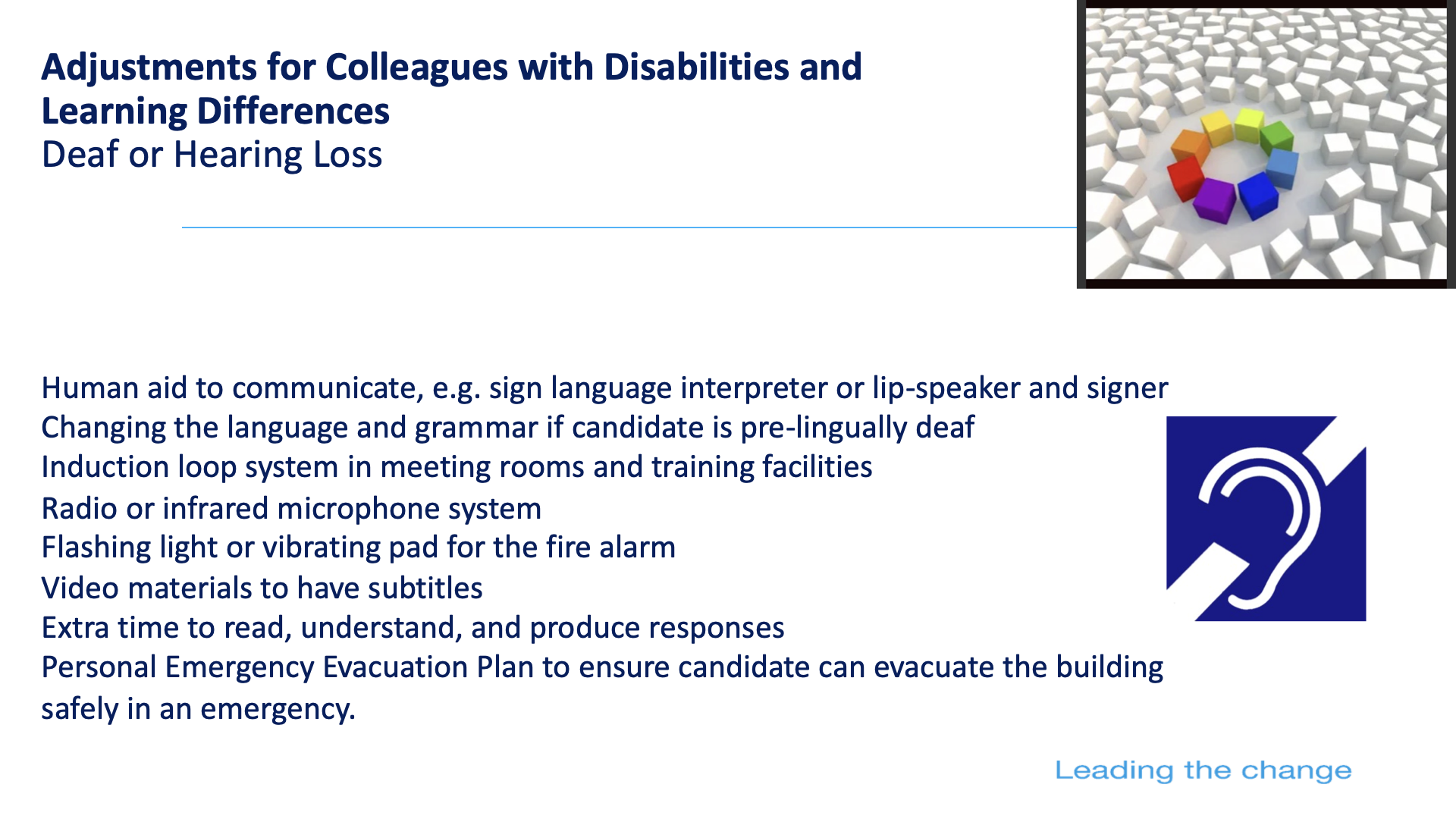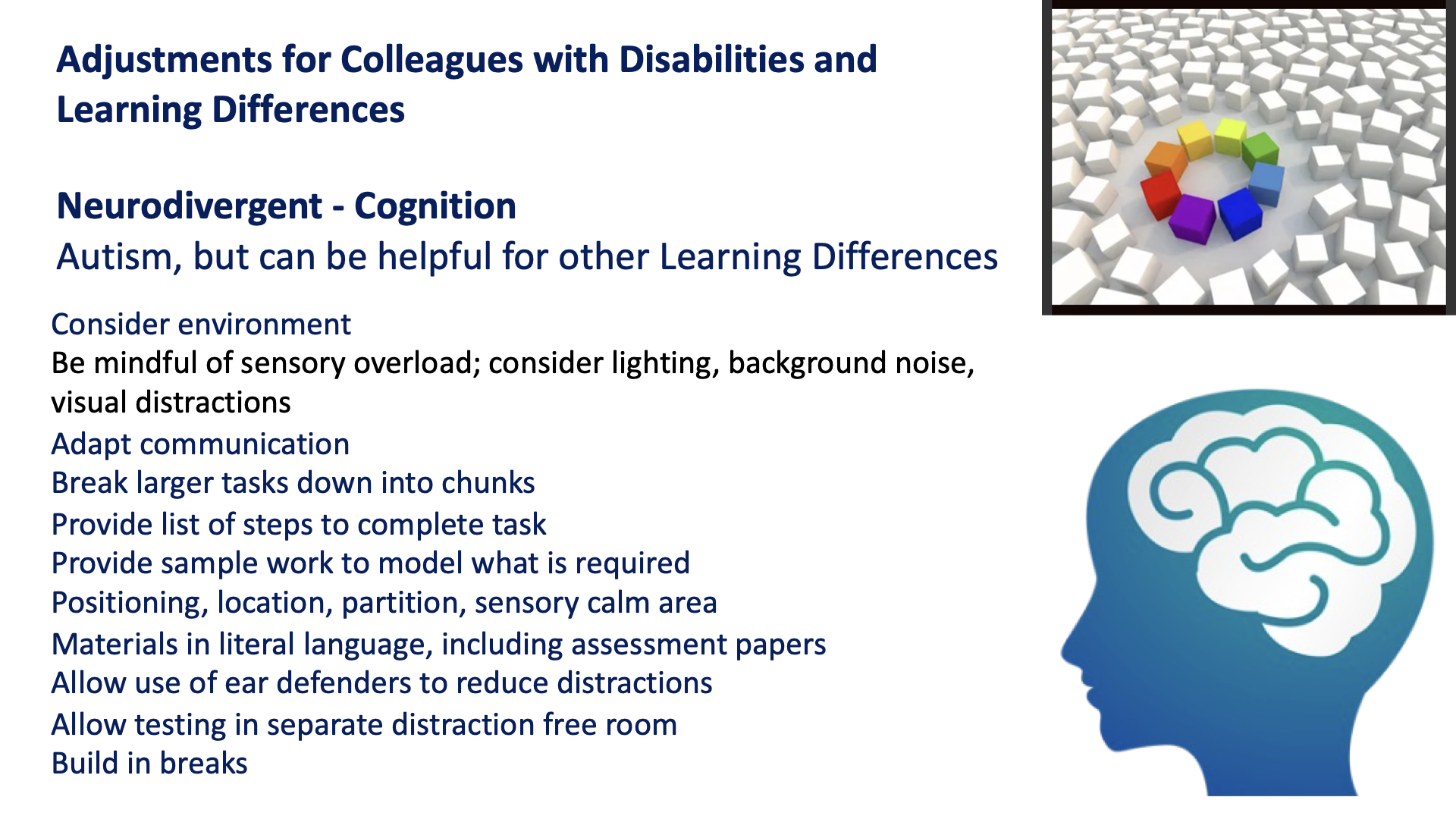Disability Inclusion Activities
- All breakout activities for today can be found on this page.
- Please keep the tab open for ease.
- Scroll to each new activity when the time comes.
- Please make sure that all voices are heard and select a speaker to share a summary of what has been discussed.
Breakout Activity One: Celebrating Good Practice
- Your leader for this activity will be the person who was born in the earliest month of the year
- Your leader will select a speaker for the team, who will share a brief summary of what was discussed. If you prefer not to speak, choose another colleague
- Your leader will guide the team through the questions below
- Make sure that all voices are heard - consciously include all members of the team!
Reflect and Discuss
1.What do you and your team already do well but could do more consistently?
2.Is there anything you'd like to do better? What could you do to be more inclusive?

Breakout Activity Two: Strategies to Enhance Disability-confidence
- Your leader for this activity will be the person whose first name is first alphabetically
- Your leader will select a speaker for the team, who will share a brief summary of what was discussed. If you prefer not to speak, choose another colleague
- Your leader will guide the team through the discussion, outlined below.
- Make sure that all voices are heard - consciously include all members of the team!
Reflect and Discuss
Reflect upon best practice and strategies to enhance communication, collaboration and cooperation and wellbeing, through the creation and maintenance of a disability-confident setting.
Areas for consideration include:
·Positive action and what you can do to manage disability in the workplace
·Duty to make reasonable adjustments
·Training and career progression
·Disability absence
·Flexible working
·Time off for medical appointments
·Discipline, dismissal, and redundancy

Paired Breakout Activity Three:
Staff Case Studies (Disability)
- For each of the following case studies, consider what reasonable adjustments could be made to ensure that the staff member feels supported and that there is no discrimination.
- Make some notes on the adjustments that may help the colleague being described in each case study
- Don’t worry about getting through them all
Some helpful links to assist with this activity:
ACAS information on Reasonable Adjustments
Please scroll below the Case Studies to find further guidance and examples of Adjustments for Colleagues/Candidates with Disabilities and Learning Differences








Adjustments for Candidates/Colleagues
with Disabilities and Learning Differences























